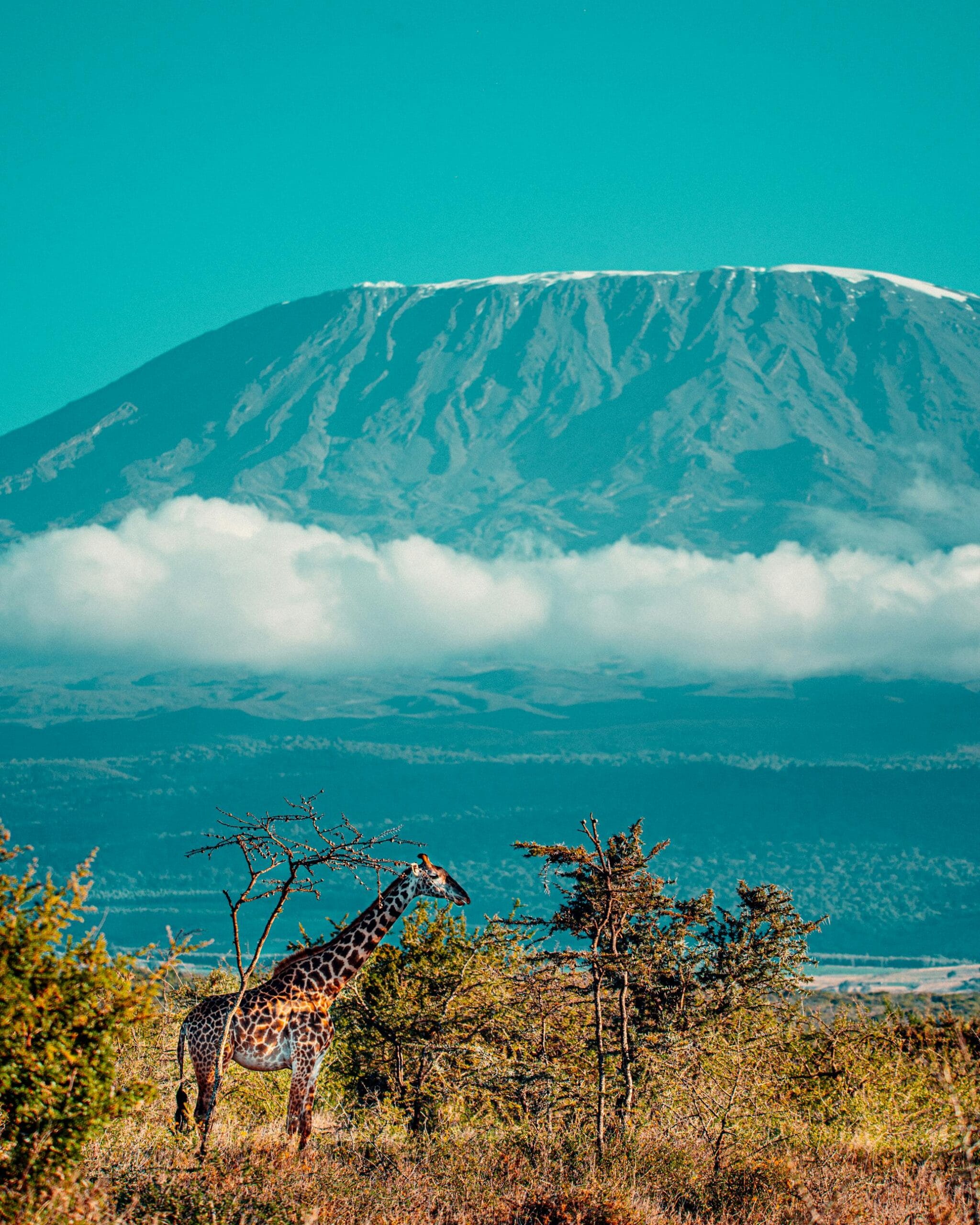Kilimanjaro climb and safari combination tours offer the perfect balance of adventure and relaxation in Tanzania. Begin with the thrill of trekking Africa’s highest mountain, and follow it with unforgettable wildlife encounters in the Serengeti and Ngorongoro Crater.
These tours are perfect for those who want to experience Tanzania’s wilderness from different perspectives, combining the personal achievement of climbing Kilimanjaro with the adrenaline rush of spotting the Big Five in their native landscapes.

The Kilimanjaro Climb
Mount Kilimanjaro is one of the most popular trekking destinations in the world. At 5,895 meters (19,341 feet), it is the tallest mountain in Africa and offers an accessible challenge for climbers of various fitness levels. The climb can take between five to nine days, depending on the route and the trekkers’ preferences.
Popular Kilimanjaro Routes:
- Marangu Route (Coca-Cola Route): The easiest and most popular route, offering comfortable hut accommodations along the way.
- Machame Route (Whiskey Route): Known for its scenic views and slightly more challenging terrain, this route is ideal for more experienced trekkers.
- Lemosho Route: A longer route that allows for better acclimatization, offering a higher success rate for summit attempts.
- Rongai Route: The only route that approaches Kilimanjaro from the north, offering a quieter and more remote experience.
What to Expect:
- Diverse Ecosystems: The trek offers a variety of landscapes, from the tropical rainforests at lower altitudes to the alpine deserts and glaciers near the summit.
- Wildlife Sightings: Depending on the route, trekkers may encounter wildlife such as monkeys, birds, and small mammals in the lower forests and moorlands.
- Cultural Encounters: Local Chagga guides provide insight into the culture and history of the area, and trekkers can learn about life in the shadow of the mountain.
Climbing Seasons: The best times to climb Kilimanjaro are during the dry seasons, from late June to October and late December to February, when the weather is more stable, and the views from the summit are clearer.
Safari After Your Kilimanjaro Adventure
Once you’ve successfully summited Kilimanjaro, it’s time to head down to Tanzania’s famous national parks for a safari adventure. Combining your climb with a safari allows you to experience the beauty of Tanzania’s wildlife in a more relaxed setting after the physically demanding trek. Many Kilimanjaro climb and safari tours offer a variety of safari packages in the following iconic destinations:
Serengeti National Park
The Serengeti is world-famous for its annual wildebeest migration, one of nature’s most dramatic wildlife spectacles. A safari here offers the chance to see lions, cheetahs, elephants, giraffes, zebras, and more. The vast savannahs, rolling hills, and impressive concentrations of wildlife make Serengeti a must-see destination for any safari enthusiast.
- Best Time to Visit: June to October for the dry season, when wildlife is abundant and easier to spot.
- Safari Highlights: The Great Migration, Big Five sightings, and mesmerizing landscapes.
Ngorongoro Crater
Ngorongoro Crater, often called the “Eighth Wonder of the World,” is a collapsed volcanic caldera and one of Tanzania’s top safari destinations. The crater floor is home to an extraordinary density of wildlife, including lions, rhinos, elephants, and wildebeest. It’s an excellent location for spotting animals in a relatively small area, making it a photographer’s dream.
- Best Time to Visit: Year-round, though June to October offers the best wildlife sightings.
- Safari Highlights: The Big Five, crater landscapes, and rare black rhinos.
Tarangire National Park
Tarangire is known for its large herds of elephants and iconic baobab trees, making it a unique destination for wildlife lovers. The park is less crowded than the Serengeti and Ngorongoro, offering a more intimate safari experience. It is also an excellent location for birdwatching, with hundreds of species found in the park.
- Best Time to Visit: June to October, when animals flock to the Tarangire River.
- Safari Highlights: Elephants, baobab trees, and birdwatching.
Lake Manyara National Park
Lake Manyara is a smaller park but offers diverse landscapes, including a soda lake, dense forests, and the Great Rift Valley escarpment. It’s famous for its tree-climbing lions and a rich array of bird species, including flamingos and pelicans. It’s an excellent choice for a more leisurely safari with a wide variety of experiences.
- Best Time to Visit: Year-round, with peak birdwatching during the wet season.
- Safari Highlights: Tree-climbing lions, flamingos, and rich birdlife.
Safari Options Post-Climb
After completing your Kilimanjaro climb, a variety of safari options are available to cater to different budgets, interests, and timelines:
- Private Safaris: Ideal for those who want a more personalized experience, with a private guide, vehicle, and flexible itineraries.
- Group Safaris: A cost-effective option for those who want to meet fellow travelers while enjoying the highlights of Tanzania’s parks.
- Luxury Safaris: For those looking to unwind in comfort, luxury safaris include stays in high-end lodges, private guides, and exclusive experiences.
How Many Days Should Your Safari Be?
While the length of your safari after the climb can vary, it’s typically recommended to spend around 3 to 5 days on safari to truly experience the highlights of Tanzania’s national parks. A combination of 2-3 days in Serengeti and Ngorongoro is ideal, with a day or two in Tarangire or Lake Manyara.
A Kilimanjaro climb combined with a safari is a once-in-a-lifetime adventure, offering an unparalleled mix of physical challenge, natural beauty, and wildlife encounters. Whether you’re trekking through rainforests and alpine deserts to reach the summit of Mount Kilimanjaro or embarking on a safari through Tanzania’s most famous parks, this combination tour promises an unforgettable journey into the heart of Africa. Future African Safari offers customized Kilimanjaro climb and safari packages, ensuring your adventure is tailored to your preferences and that you experience the very best of Tanzania’s landscapes, wildlife, and culture.

